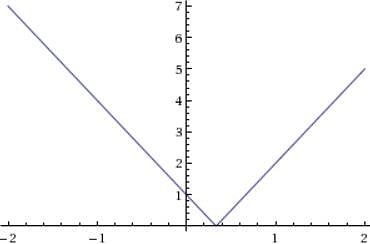GMAT Exam > GMAT Tests > Practice Questions for GMAT > Test: Absolute Values/Modules - GMAT MCQ
Test: Absolute Values/Modules - GMAT MCQ
Test Description
10 Questions MCQ Test Practice Questions for GMAT - Test: Absolute Values/Modules
Test: Absolute Values/Modules for GMAT 2024 is part of Practice Questions for GMAT preparation. The Test: Absolute Values/Modules questions and answers have been
prepared according to the GMAT exam syllabus.The Test: Absolute Values/Modules MCQs are made for GMAT 2024 Exam. Find important
definitions, questions, notes, meanings, examples, exercises, MCQs and online tests for Test: Absolute Values/Modules below.
Solutions of Test: Absolute Values/Modules questions in English are available as part of our Practice Questions for GMAT for GMAT & Test: Absolute Values/Modules solutions in
Hindi for Practice Questions for GMAT course. Download more important topics, notes, lectures and mock
test series for GMAT Exam by signing up for free. Attempt Test: Absolute Values/Modules | 10 questions in 20 minutes | Mock test for GMAT preparation | Free important questions MCQ to study Practice Questions for GMAT for GMAT Exam | Download free PDF with solutions
Test: Absolute Values/Modules - Question 1
If x is a number such that –2 ≤ x ≤ 2, which of the following has the largest possible absolute value?
Detailed Solution for Test: Absolute Values/Modules - Question 1
Detailed Solution for Test: Absolute Values/Modules - Question 2
| 1 Crore+ students have signed up on EduRev. Have you? Download the App |
Detailed Solution for Test: Absolute Values/Modules - Question 3
Test: Absolute Values/Modules - Question 4
If k is an integer, the least possible value of |129 − 17k| is
Detailed Solution for Test: Absolute Values/Modules - Question 4
Test: Absolute Values/Modules - Question 5
How many possible values of m satisfy the inequality |m + 1| – |m – 3| > 4, if m is an integer?
Detailed Solution for Test: Absolute Values/Modules - Question 5
Test: Absolute Values/Modules - Question 6
If x < y < 0, which of the following must be true?
I. |x| > |y|
II. x/y > 1
III. xy < 0
Detailed Solution for Test: Absolute Values/Modules - Question 6
Test: Absolute Values/Modules - Question 7
If |x|/|3| > 1, which of the following must be true?
Detailed Solution for Test: Absolute Values/Modules - Question 7
Test: Absolute Values/Modules - Question 8
If x is negative and the absolute value of 1/x is greater than 50, which of the following about x must be true?
Detailed Solution for Test: Absolute Values/Modules - Question 8
Test: Absolute Values/Modules - Question 9
How many possible integer values are there for x if |4x - 3| < 6 ?
Detailed Solution for Test: Absolute Values/Modules - Question 9
Detailed Solution for Test: Absolute Values/Modules - Question 10
|
18 docs|139 tests
|
Information about Test: Absolute Values/Modules Page
In this test you can find the Exam questions for Test: Absolute Values/Modules solved & explained in the simplest way possible.
Besides giving Questions and answers for Test: Absolute Values/Modules, EduRev gives you an ample number of Online tests for practice




















